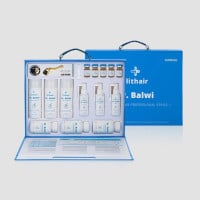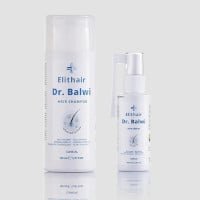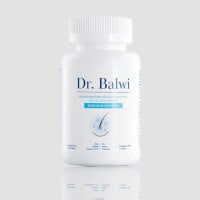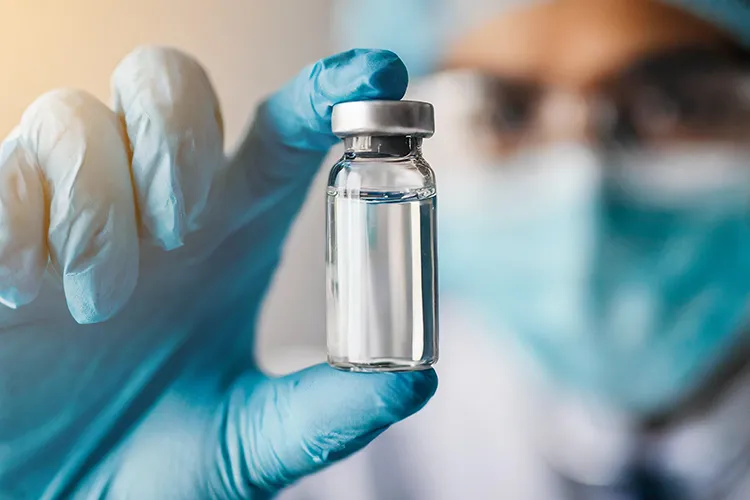
PP405: Hope or Hype? The New Approach to Androgenetic Alopecia
Hair loss hits many people harder than they’d like to admit. When receding hairlines deepen or hair on the crown of the head starts thinning, it’s no longer just about appearances – it’s about identity, ageing, and self-esteem.
That’s why every new active ingredient that could halt the progression of hair loss generates great interest. One such treatment currently under review which is generating a lot of buzz is PP405.
But what is PP405? Could PP405 become the treatment of the future – or will hair transplantation remain the only permanent solution? That’s what we’ll be seeking to find out in this article.
What Is PP405?
PP405 is a newly developed, non-hormonal active ingredient currently being tested in preclinical and early clinical trials. Chemically, it belongs to the so-called low-molecular-weight compounds – small organic molecules that specifically influence biochemical processes in cells.
PP405 was developed by the US biotech company Pelage Pharmaceuticals, which specialises in regenerative therapies for hair loss. The substance interferes with the energy metabolism of hair follicle cells and is intended to reactivate the scalp’s natural growth system.
How Does PP405 Work?
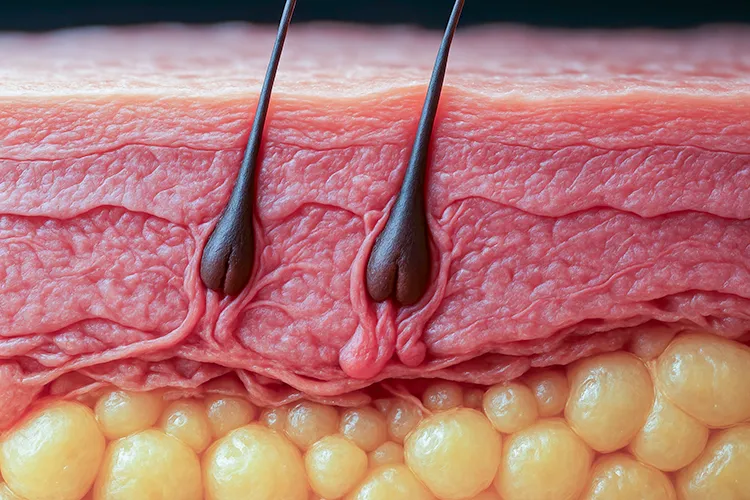
The substance inhibits the transport of pyruvate into the mitochondria, altering cellular metabolism and increasing the production of lactate. According to studies, this process is said to stimulate the activity of hair follicle stem cells and prolong the growth cycle.
Researchers believe that PP405:
- Prolongs the hair growth cycle (anagen phase)
- Reactivates dormant hair follicles
- Inhibits inflammatory processes in the scalp
- Improves blood circulation and nutrient supply
- Stimulates the production of growth factors such as VEGF and IGF-1
In contrast to hormonally active substances such as finasteride or minoxidil, PP405 acts directly at the cellular level – an innovative approach that relies on the self-regeneration of hair follicles. Furthermore, the active ingredient is considered well-tolerated and is said to cause few to no systemic side effects, as it acts exclusively locally on the scalp.
However, so far, only an increase in hair density of about 20% has been observed, which is roughly equivalent to the effect of minoxidil. While PP405 can stimulate hair growth, it does not achieve the lasting density of a hair transplant, which uses real, growing follicles.
When Will PP405 Become Available in the UK?
PP405 is currently being tested in Phase 2a trials only in the US. In this study phase, the substance is already being tested on humans to check its effectiveness and tolerability. Approval is not possible until 2027 at the earliest. No application has yet been submitted for the MHRA, so British hopefuls will have a few more years to wait.
This means a market launch here isn’t likely to occur before 2029–2030. PP405 is also likely to be prescription-only and can only be prescribed after a medical diagnosis.
Why the Effectiveness Could Vary From Person to Person
As promising as the research sounds, one thing is clear: hair loss varies from person to person. The causes range from genetic and hormonal influences to stress, diet, or medication.
Therefore, PP405, like all other treatment approaches, may not work equally well for everyone. Key factors include:
- Genetic sensitivity of the hair roots to DHT
- Severity of hair loss
- General scalp health
- Lifestyle factors such as diet and sleep
Studies have already shown that the success rates for minoxidil and finasteride vary considerably; some achieve significant results, others barely visible. PP405 is likely to be no exception. In addition, there is no long-term data yet, neither on side effects nor on the optimal dosage. For now, the active ingredient remains an exciting area of research, but not an approved therapy.
Why Early Intervention is so Important
How well a new treatment works also depends on when treatment begins. In the early stages of androgenetic alopecia, the hair follicles are usually still present, albeit weakened. A stimulating agent can reactivate their activity.
However, if the follicles are already permanently destroyed or scarred, growth can no longer be reactivated. In this case, PP405 can at best slow the progression, but cannot generate new hair.
This shows that those who react early have the best chances, regardless of the treatment.
Why Are Hair Transplants so Successful?
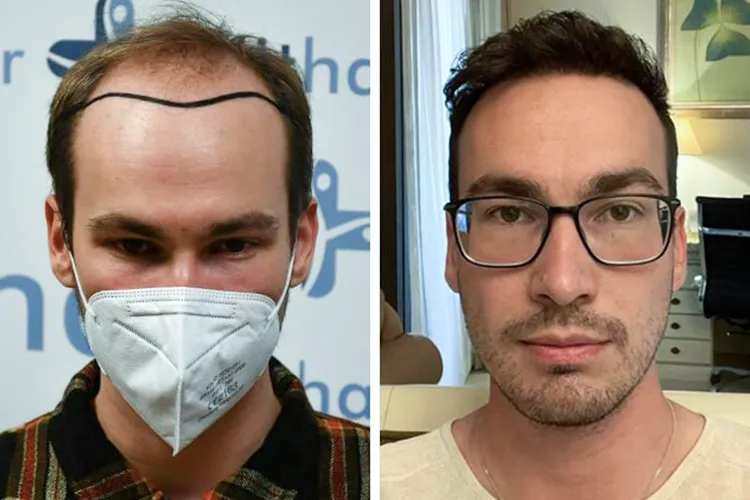
While new substances like PP405 are still being researched, hair transplantation has long been a proven, permanent solution. Modern methods such as FUE (Follicular Unit Extraction) or DHI (Direct Hair Implantation) enable natural results that last a lifetime. If you’d like to understand how these procedures work and why many patients choose to have their surgery abroad, explore our detailed guide to hair transplants in Turkey.
Advantages at a glance:
- Natural result: The hair comes from the patient’s own head and thus grows and behaves naturally.
- Permanent effect: Once transplanted, the follicles remain resistant to DHT.
- Fully bespoke: Hair density and hairline can be precisely shaped.
- Emotional effect: Patients report increased self-confidence, zest for life, and a new body image.
Thanks to gentle techniques such as the Sleep Deep method, the procedure is now virtually painless, safe, and relaxing – and offers real results.
Conclusion: Research With Potential, Better Results With Your Own Hair
PP405 demonstrates how intensively science is working on new solutions for hair loss. However, there’s still a long way to go before the active ingredient can truly represent an alternative.
For anyone seeking visible and lasting results, hair transplantation remains the most effective method. It combines medical precision with a result that not only promotes growth but also boosts self-confidence.
Get personalised advice from Elithair now and find out which method offers the best and most sustainable path to full hair for you.
FAQs
What makes PP405 different from existing treatments like Minoxidil or Finasteride?
Unlike Minoxidil and Finasteride, which influence blood flow or hormone levels, PP405 works directly on the energy metabolism of hair follicle cells. It aims to reactivate natural growth processes rather than alter hormonal pathways.
Is PP405 suitable for both men and women?
Yes, current research suggests PP405 could be effective for both sexes, as its mechanism is non-hormonal. However, more data from ongoing trials is needed to confirm this.
What stage of development is PP405 currently in?
PP405 is undergoing Phase 2a clinical trials in the United States. These early-stage studies assess safety, dosage, and initial efficacy before larger trials take place.
Are there any known side effects at this stage?
So far, preclinical and early clinical results indicate that PP405 is well tolerated. However, comprehensive safety data will only become available after further testing.
How would PP405 likely be used once approved?
It is expected to be applied topically to the scalp, similar to existing hair growth products, allowing it to act directly on the hair follicles.
When might PP405 realistically become available in the UK?
Given the current trial timeline, PP405 is unlikely to be available in the UK before 2029 or 2030, and it would almost certainly require a prescription.
Can PP405 be combined with other hair loss treatments?
This has not yet been studied. In future, doctors may recommend combination approaches if evidence supports their safety and added benefit.
Will PP405 help with all types of hair loss?
No. PP405 specifically targets androgenetic alopecia (hereditary hair loss). It is not designed for autoimmune or scarring forms of hair loss.
How soon might results be visible once treatment begins?
If effective, noticeable improvement could take three to six months, as hair follicles need time to complete growth cycles and respond to stimulation.
Could PP405 be used after a hair transplant?
Potentially, yes. It might help strengthen existing follicles and maintain overall density, though clinical trials will need to confirm its suitability for post-transplant care
